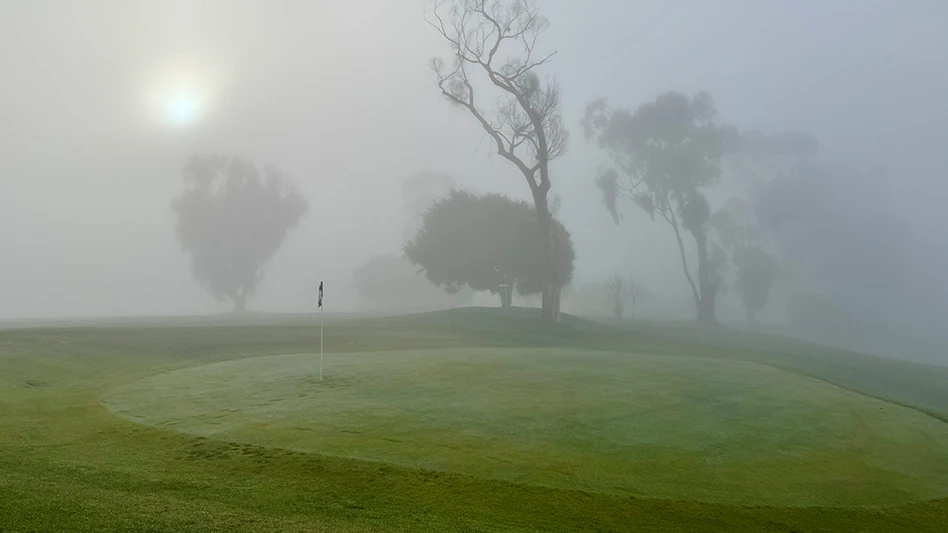
Guy Cipriano
Golf moves at a measured, methodical pace despite being an industry with an economic impact exceeding $100 billion.
Gradual change means calculated investments and fewer unique product releases compared to larger crop-based industries such as agricultural or lawn care. Sometimes we get envious of our friends at Lawn & Landscape magazine because they cover massive acquisitions and receive invites to attend events unveiling flashy new products in glamorous places. The awesomeness of our audience swiftly ends our envy. Even much of the research occurring on golf turf examines issues that have been prevalent for decades.
Positioning existing solutions and problems in different ways creates auras of newness in golf maintenance. Enhanced products and processes make enormous contributions to elevating the experience of consumers enjoying golf at record levels.
But is any of it actually new?
Industry veterans — err, curmudgeons — dismissively and quickly shrug upon hearing a product, problem or solution being classified as new. Been around the cart path a few times. Heard about it. Witnessed it.
Judging by the sizable crowd in a large Rhode Island Convention Center meeting room during the recent New England Regional Turfgrass Conference & Show presentation, fortunately a zest to learn about something potentially novel remains. Superintendents and friends consistently receive an A++++++ for curiosity.
University of Connecticut associate professor Dr. John Inguagiato led the presentation, “New Disease Affecting Annual Bluegrass Greens.” There’s that word again. Through research and on-course observations conducted in New England and Chicago, Inguagiato and his team have learned something different is hampering Poa annua greens.
The group studying the problem initially pegged the issue as waitea patch, a textbook disease, although one not as prevalent as anthracnose, summer patch, dollar spot or bacterial wilt. The more samples Inguagiato and his team studied, the more they realized they were examining something unique.
The new disease, according to Inguagiato’s presentation:
- Show symptoms, which consist of yellow rings reaching 6 inches in diameter, in spring when turf exits dormancy
- Becomes broader and thicker as it gets more severe
- Diminishes in size and scope as temperatures transition from spring to summer norms
- Reappears in the same spots on research plots in the fall
Like any turfgrass-related issue, more research will be required to determine effective cultural and plant protectant practices for thwarting its spread on greens and other surfaces. “It’s early on,” Inguagiato said. “There’s a lot to work on.” Engagement from the golf maintenance community, specifically sending samples and photos to the UConn turf pathology lab, will help Inguagiato’s team learn more about the disease.
At the end of the presentation Inguagiato performed a throwback, hand-raising survey to learn whom in the room might have spotted the disease on a green. Around a dozen arms went up. Anybody in the room managing Poa annua greens has likely already scoured their surfaces this spring for the symptoms Inguagiato mentioned.
Nomenclature is one of the most fascinating aspects of studying or unveiling something new. Inguagiato revealed a preliminary — and witty — list of potential names for the disease. Some names, such as “Husky ring,” “championship ring” and “Hurley Ring,” celebrate UConn. It’s too soon to tell if the disease’s fervor matches the intensity displayed by the school’s fiery men’s basketball coach Dan Hurley. Other names, such as “spring ring” and “yellow patch ring,” reflect the disease’s characteristics.
While the golf industry might lack buzz-generating new products and problems, it’s ideally positioned to handle different challenges. What Inguagiato and his are studying might eventually become a veteran problem with proven solutions, thanks to the immense curiosity and ingenuity in New England and beyond.
Guy Cipriano is Golf Course’s Industry’s publisher + editor-in-chief.
Latest from Golf Course Industry
- Schaffer’s Mill turns to Troon for management
- Talking Turf Weeds 13: Talking seasonal change with Heidi Burgess and Paul Marquardt
- Beyond the Page 65: New faces on the back page
- Indiana course upgrades range with synthetic ‘bunkers’
- Monterey Peninsula CC Shore Course renovation almost finished
- KemperSports and Touchstone Golf announce partnership
- PBI-Gordon Company hires marketing manager Jared Hoyle
- Mountain Sky Guest Ranch announces bunker enhancement project





